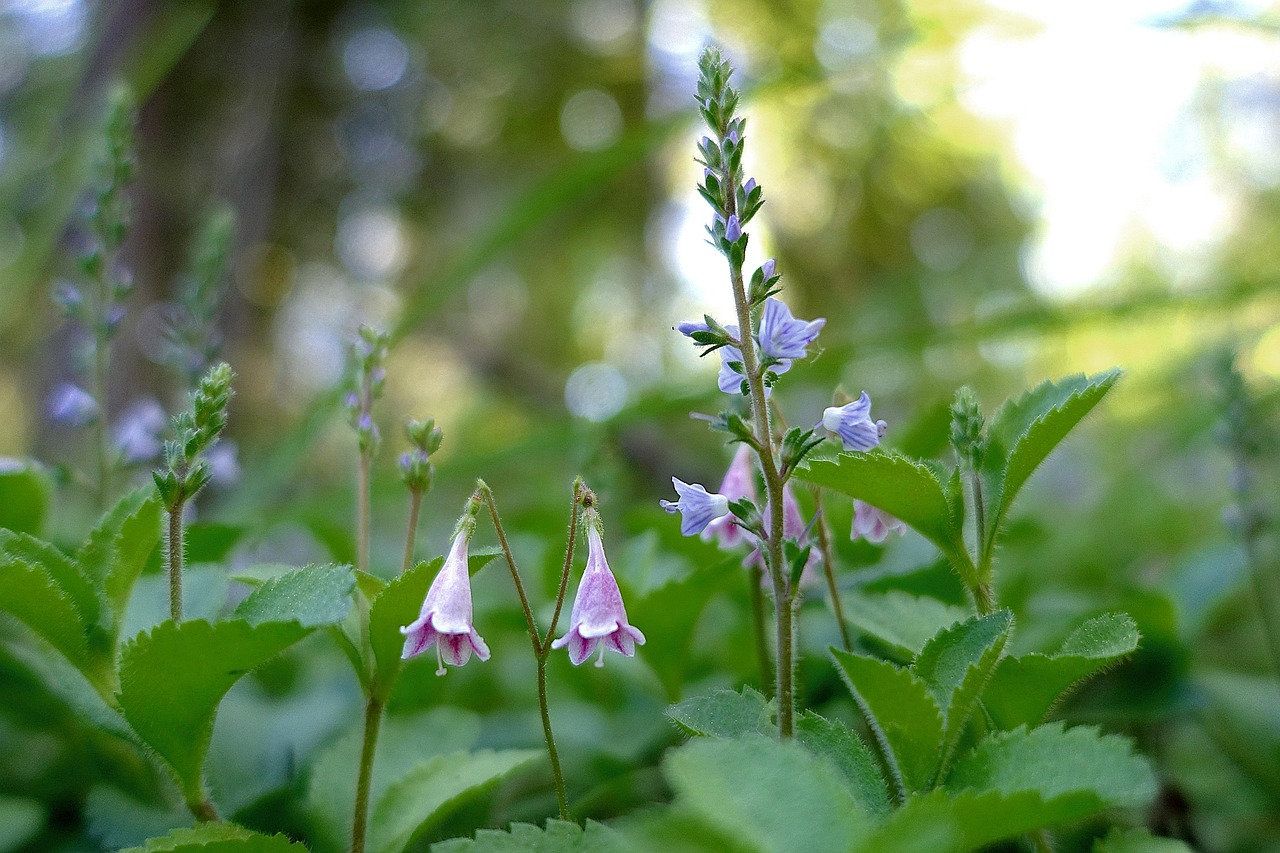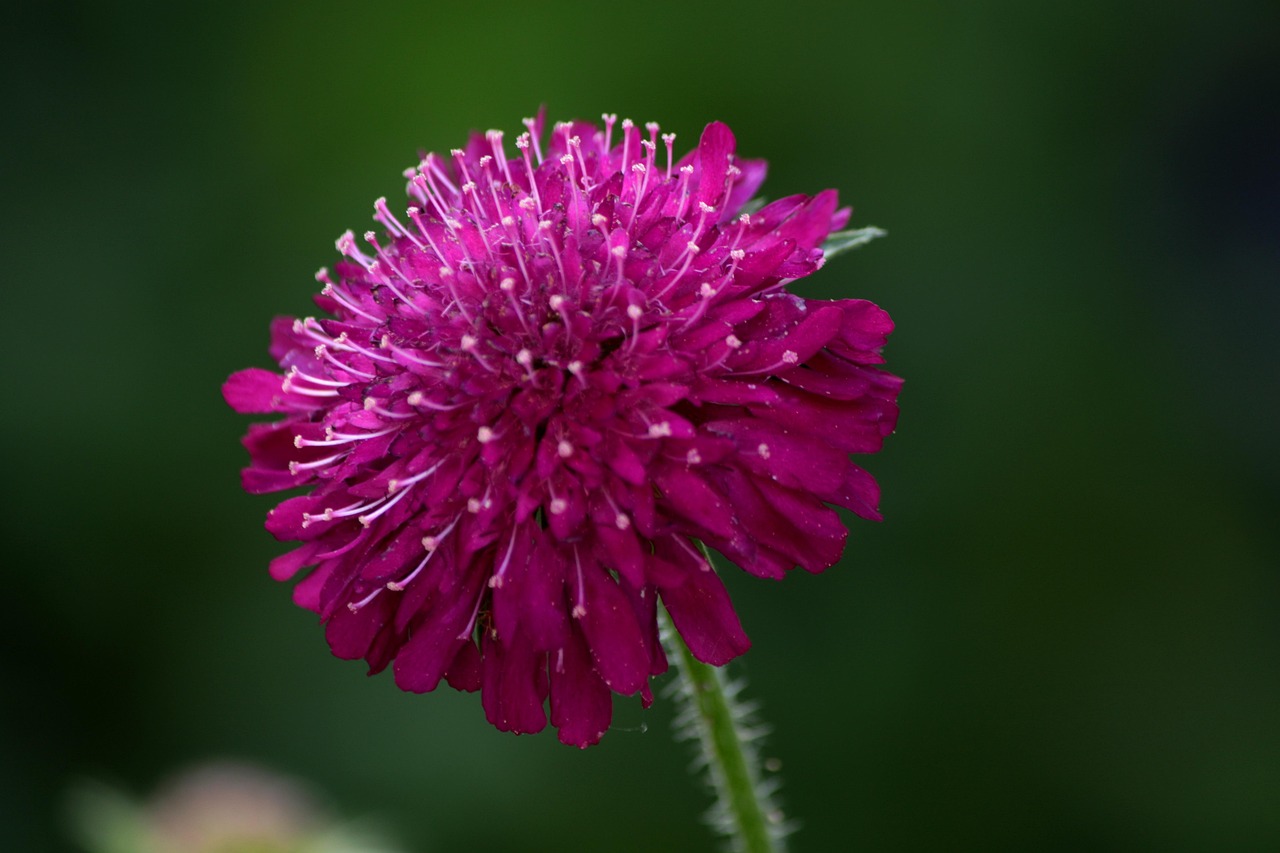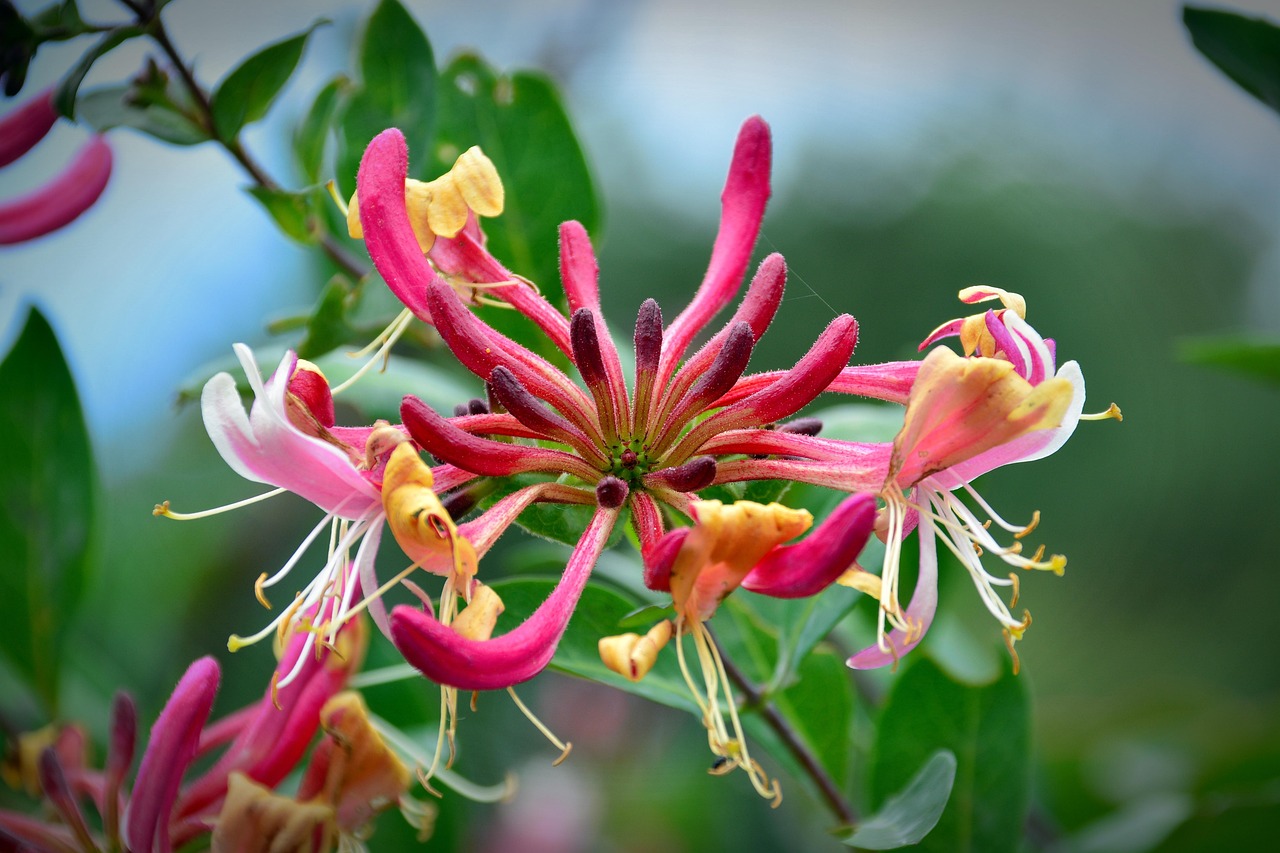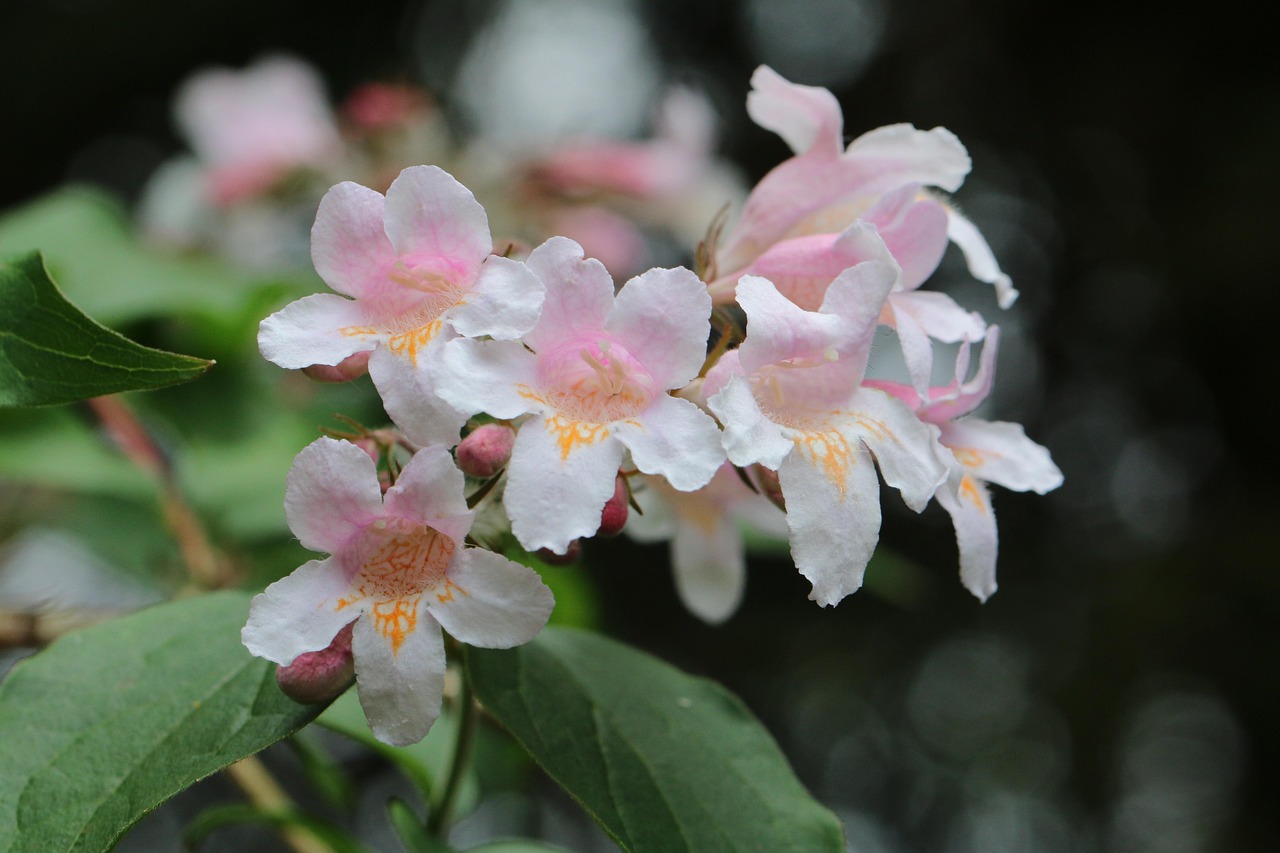Symphoricarpos | White Berries as an Accent in Western Winter Landscapes
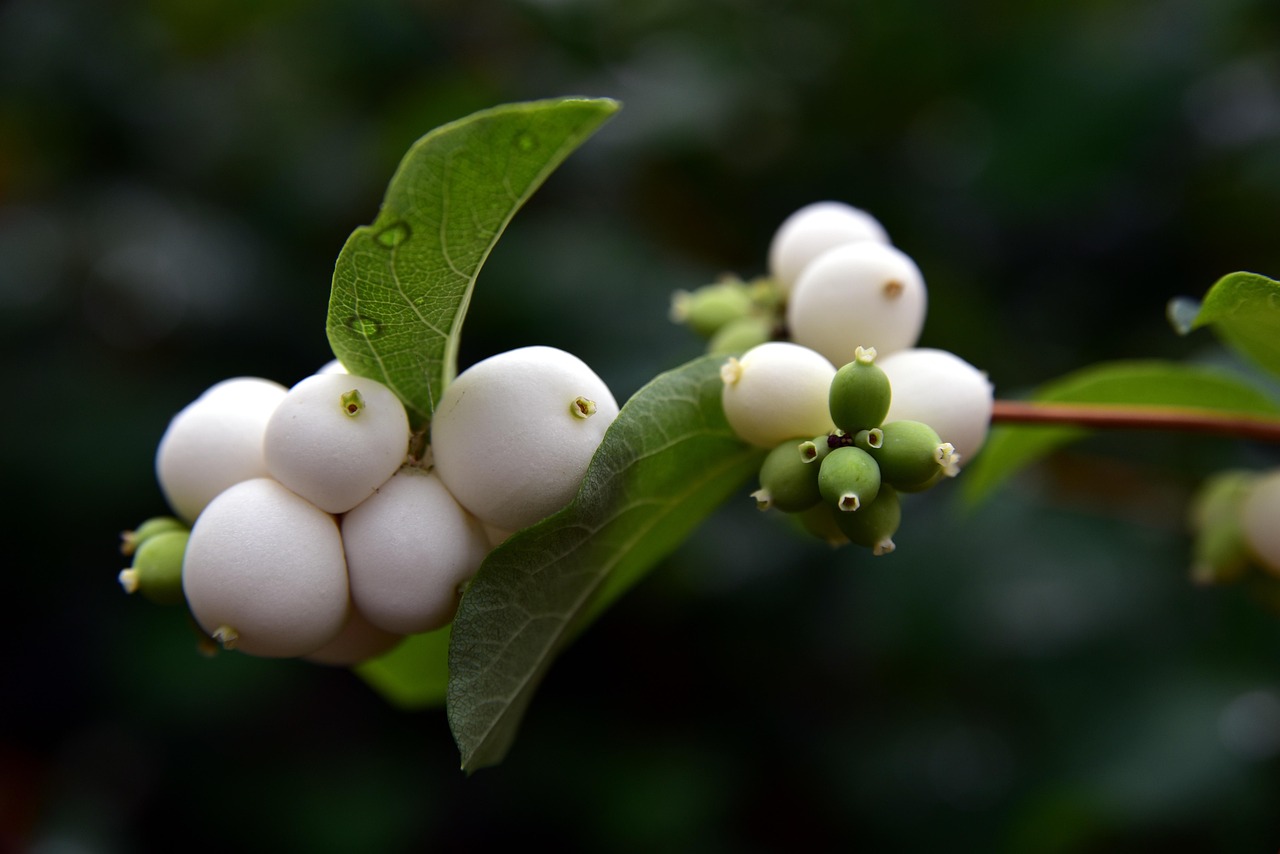
Symphoricarpos is a deciduous shrub that produces charming round berries from autumn to winter.
Its distinctive white and pink berries add color to gardens and parks, serving as a symbol of the approaching winter season. Thanks to its strong cold resistance and easy maintenance, it has become a beloved ornamental plant in many countries.
In this article, I will introduce the basic information, cultural significance, history, and cultivation methods of Symphoricarpos.
Basic Information
- Scientific name: Symphoricarpos spp.
- Family: Caprifoliaceae
- Origin: North America
- Appearance: The berries grow in clusters on the branches of this shrub. Their colors range from white to pale pink, sometimes with a purplish hue. After small bell-shaped flowers bloom in summer, the berries ripen in autumn.
- Flowering season: Summer (June–August)
- Fruiting season: Autumn–Winter (September–December)
Cultural Significance Worldwide
Symphoricarpos has long been cultivated as an ornamental plant, especially in North America.
In the United States and Canada, it is planted in gardens and parks as a plant that brightens autumn and winter landscapes. The variety with white berries is known as Snowberry and is cherished as a symbol of winter.
In Europe, it was introduced in the 19th century and quickly attracted the interest of horticulturists. It became popular in gardens and hedges.
In the United Kingdom, the white berries blending into winter landscapes have inspired poetry and paintings, adding to their decorative value.
In France and Germany, where the berries remain on the branches for a long time, Symphoricarpos is appreciated as an accent in winter gardens.
In China, the round berries are associated with tuányuán (円満, harmonious relationships) and are regarded as auspicious. They are sometimes cultivated as garden trees or bonsai.
Historical Background
Symphoricarpos was brought from North America to Europe in the late 18th and early 19th centuries. Initially studied by botanists and explorers, it was later introduced into horticulture.
Among Native American communities, the berries were recognized as significant plants, often used in rituals and traditional practices. Their beauty symbolized the blessings of nature.
From the 19th century onward, with the development of Western garden culture, many new varieties were developed and the shrub became widely grown for ornamental purposes.
Gardening Advice
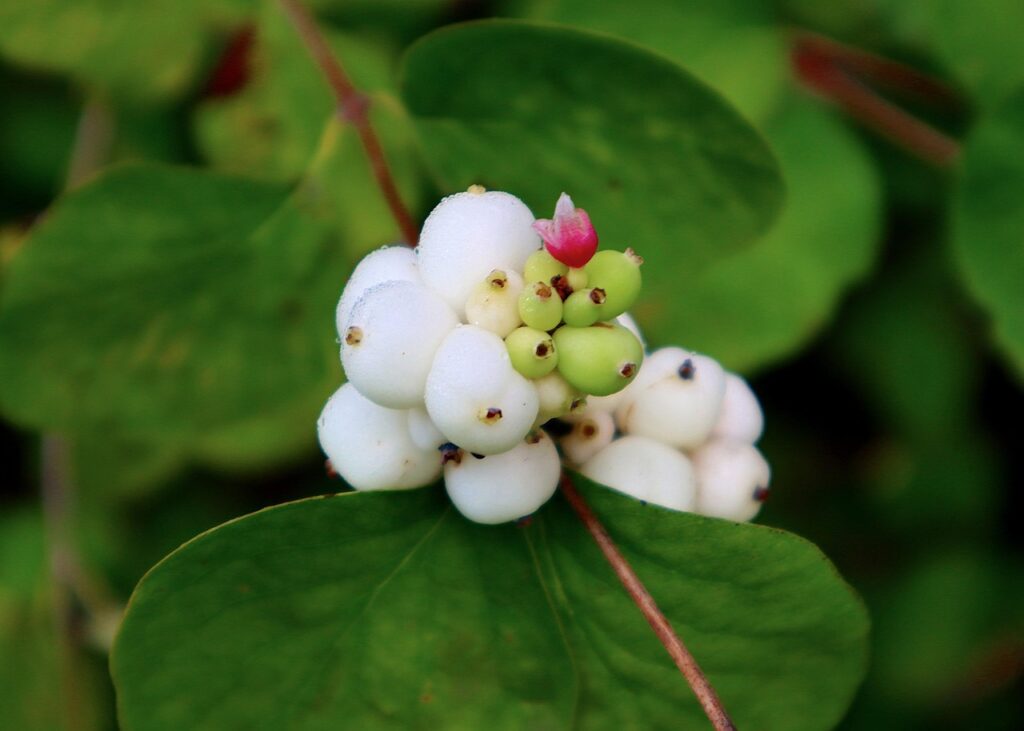
Symphoricarpos is relatively easy to care for, making it suitable even for beginners.
Sunlight
Prefers full sun to partial shade. Berry production improves with more sunlight, though it also grows well in semi-shaded conditions.
Watering
After planting, keep the soil moist. Once established, the plant is drought-tolerant and usually requires only natural rainfall. Water during extreme dryness.
Soil
Prefers well-drained soil with moderate moisture retention. Garden soil mixed with leaf mold or general-purpose soil works well.
Fertilizer
Apply slow-release fertilizer moderately during the growing season (spring–summer) to improve flowering and fruiting. Avoid over-fertilization.
Pruning
Prune old or overcrowded branches in late winter to early spring to promote healthy growth.
Cold resistance
Hardy even in cold regions. In extremely cold areas, apply mulch before frost for protection.
Conclusion
Symphoricarpos is a deciduous shrub producing round berries from autumn to winter, admired for its unique appearance in many countries.
In its native North America, it is widely planted in gardens and parks as a winter ornamental plant. In Europe, it was introduced in the late 18th century and has since been valued for its decorative qualities. In China, the round berries symbolize harmony and good fortune.
With easy maintenance, proper pruning, and moderate fertilization, you can enjoy its beautiful berries for many years.


